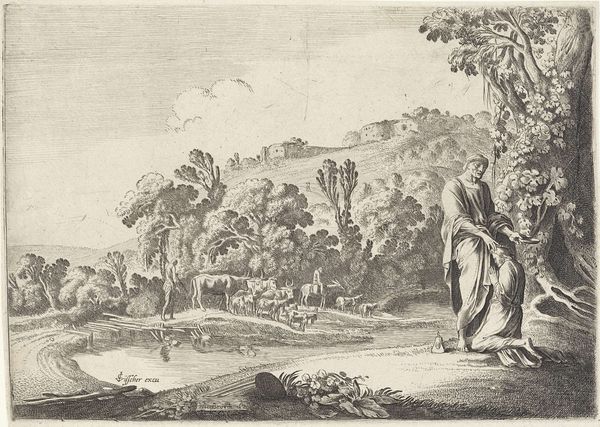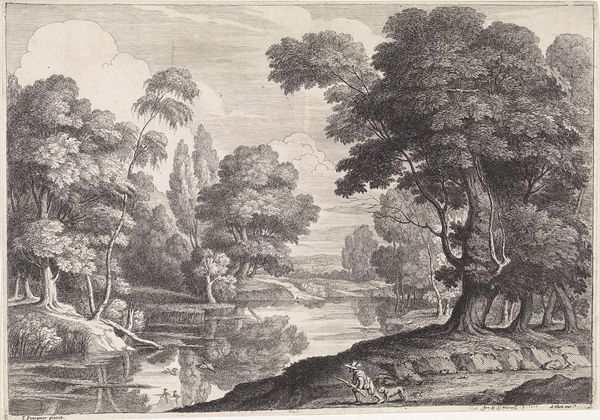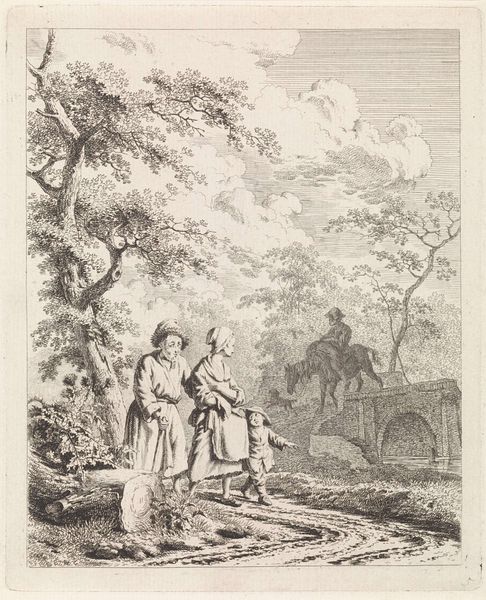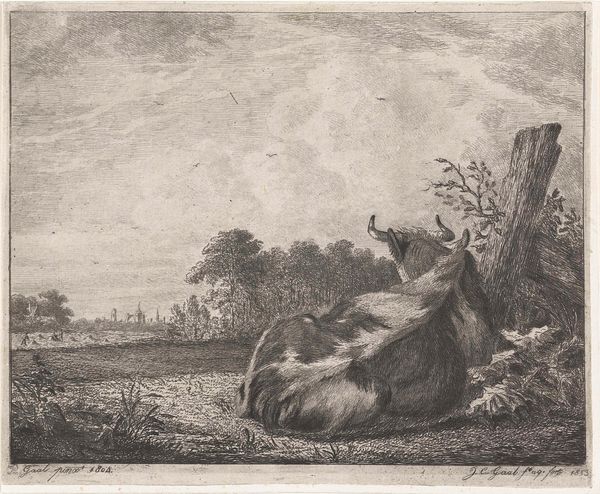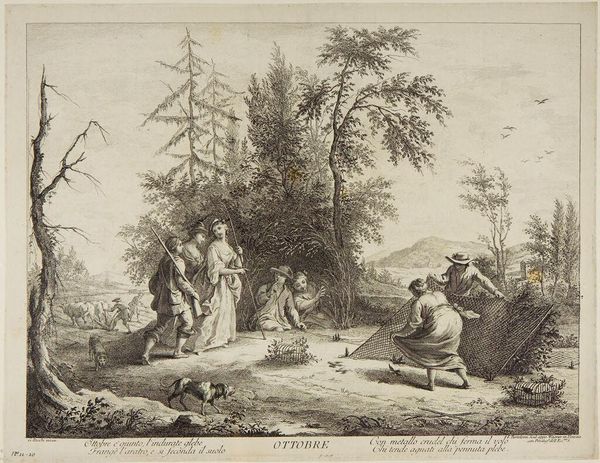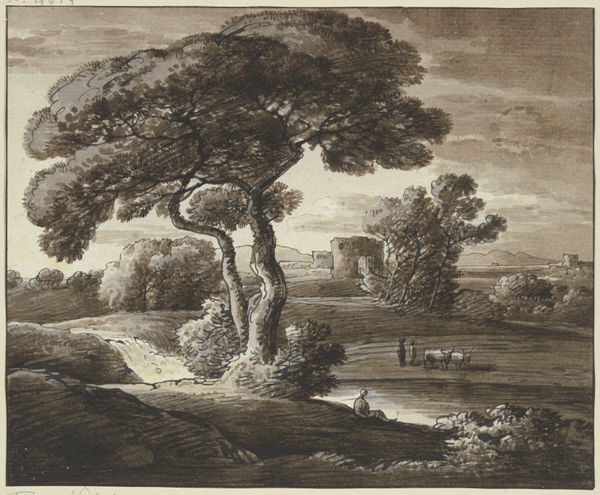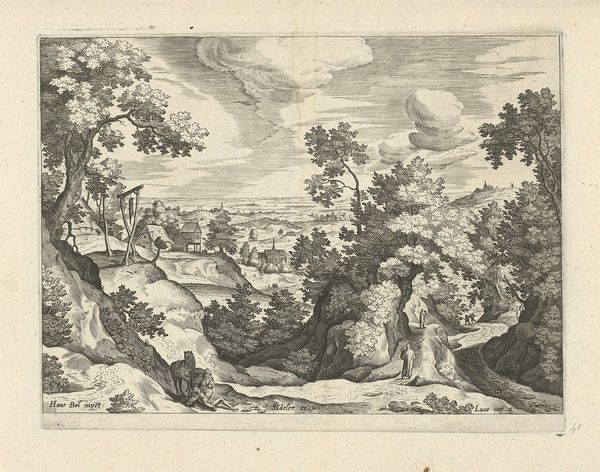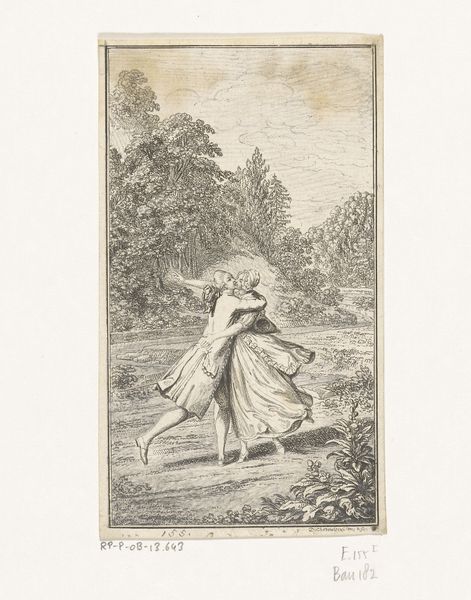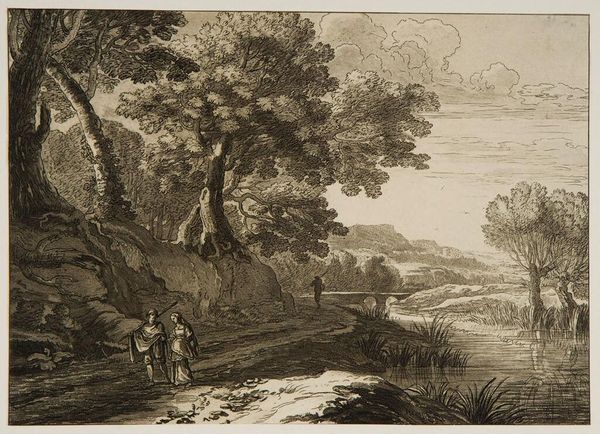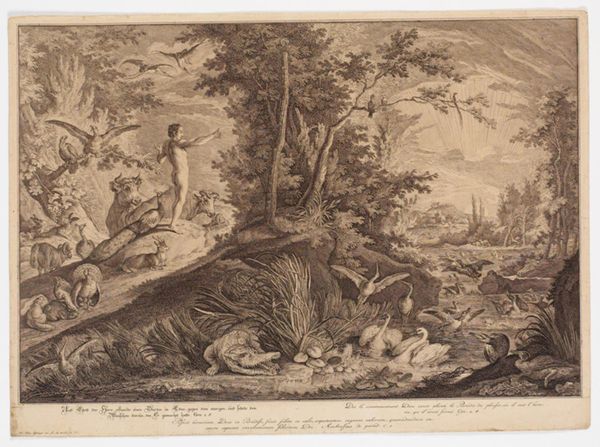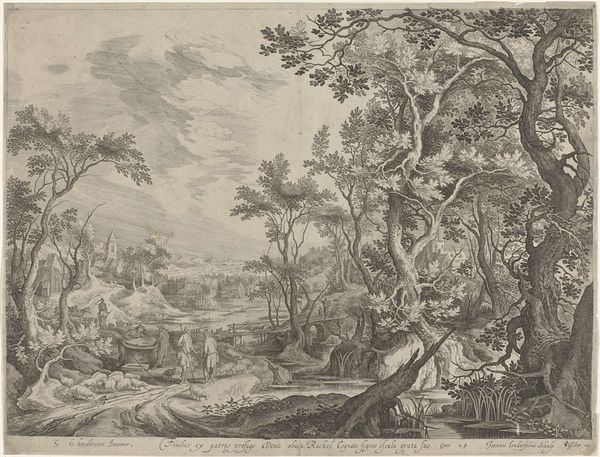
print, etching
#
baroque
# print
#
etching
#
landscape
#
figuration
Dimensions: height 230 mm, width 305 mm
Copyright: Rijks Museum: Open Domain
Curator: Today we are looking at "Woman on the Bank of a River," a print from the Rijksmuseum’s collection, made by Bernard Picart sometime between 1683 and 1733. It employs etching techniques and falls squarely into the baroque landscape style. What are your first impressions? Editor: Oh, instantly peaceful. It’s delicate, like a whispered secret. All these fine lines suggesting textures, water, cloth…it's as though he has bottled a hazy afternoon. Curator: Baroque landscapes often sought to idealize nature. Observe the figure: She is elevated, nearly classical in form, carrying what seems to be flowers on her head, yet barefoot. She acts as a kind of bridge between a timeless aesthetic and the everyday world. Editor: She looks thoughtful. Wondering if she has watered her tulips enough today, maybe? There’s an inherent quiet labor here; Picart seems interested in the connection between figure and land. I wonder how she felt about having to fetch that heavy bucket every day, what she hoped for, if she noticed all the nature around her like this... Curator: Indeed, she represents a very romantic vision of the rural figure—a shepherdess perhaps or simply a hard-working woman. The politics of representation in landscape art often played on idealized figures in idealized settings for an increasingly urban, art-consuming public. These images provided a sense of nature and peace amidst the growing city landscapes. Editor: Right, it's fascinating how what we depict reflects our yearning. And maybe our disconnection, too. Picart probably wasn’t slaving away barefoot at the river every day, haha! I get the feeling this could've been commissioned as somebody's country house vision. Curator: Well, precisely. The setting offers tranquility but also suggests a sort of benevolent rule. The ordered background is not accidental: fields imply work and, consequently, the presence of someone overseeing all this productive activity. This vision suggests comfort for an owner and distance from labor. Editor: So, while it feels serene on the surface, it is quite loaded, a beautiful lie almost. And these reflections... very baroque of it. Makes you wonder if they see how their life feeds another's illusion. Thank you, Bernard! Now, my perception's turned. Curator: I’m glad. Art helps reveal complexities that challenge our assumptions, making these antique mirrors so relevant still.
Comments
No comments
Be the first to comment and join the conversation on the ultimate creative platform.
